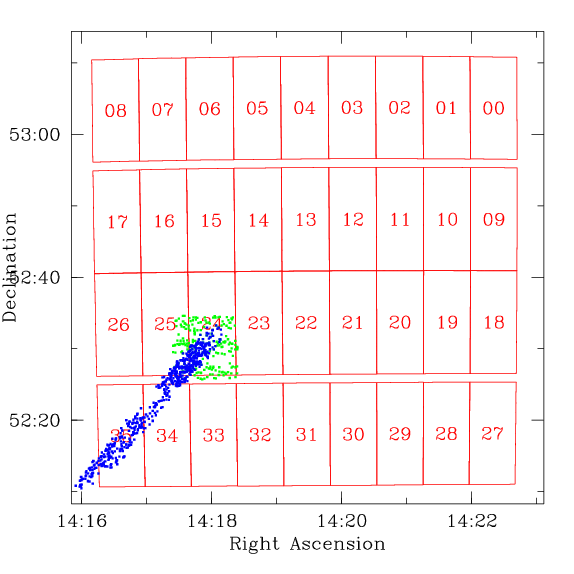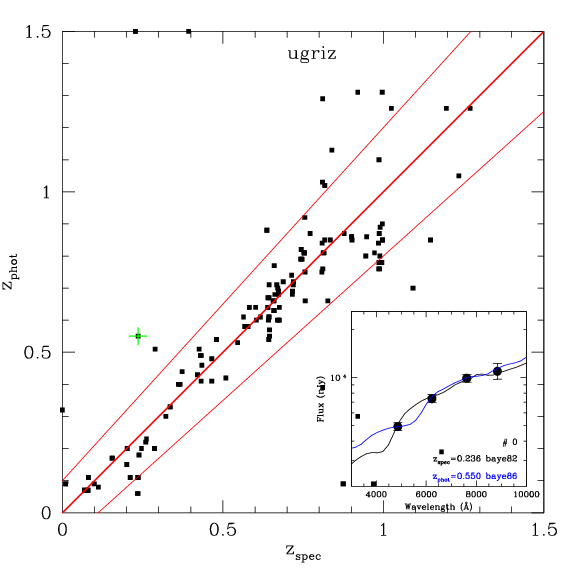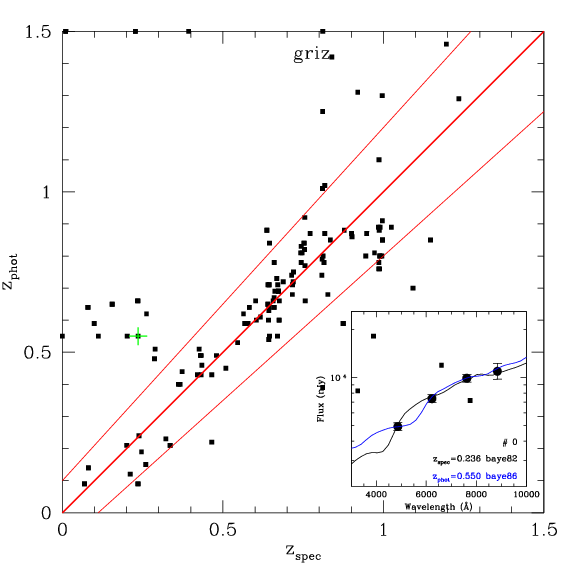Photometric Redshifts: Photometric redshifts were measured with gwynz which works with the template fitting method.
- Galaxy spectra (described here) are redshifted and then multiplied by the MegaCam filter curves (described here) to produce spectral templates ranging in type from E/S0 to active starburst and in redshift from z=0 to z=1.5.
-
The galaxy photometry is converted into fluxes per unit Angstrom using
the equation
 Where m is the magnitude,
F is the flux and
F0 is the flux zeropoint of the filter in
question.
This produces a coarse spectral energy distribution (SED).
Following flux zeropoints were used (in units of W/m2/Angstrom):
Where m is the magnitude,
F is the flux and
F0 is the flux zeropoint of the filter in
question.
This produces a coarse spectral energy distribution (SED).
Following flux zeropoints were used (in units of W/m2/Angstrom):
Filter zeropoint gAB 4.63e-12 rAB 2.83e-12 iAB 1.89e-12 zAB 1.40e-12 -
The spectral templates were compared to the SED's using the following
equation:

Where Fi is the flux of the galaxy, in the i-th band, σi is the error on the flux Ti(t,z) is the template flux for type t and redshift z, and α is a normalization factor given by:
The best matching (smallest chi-squared) template gives the redshift and galaxy type.



